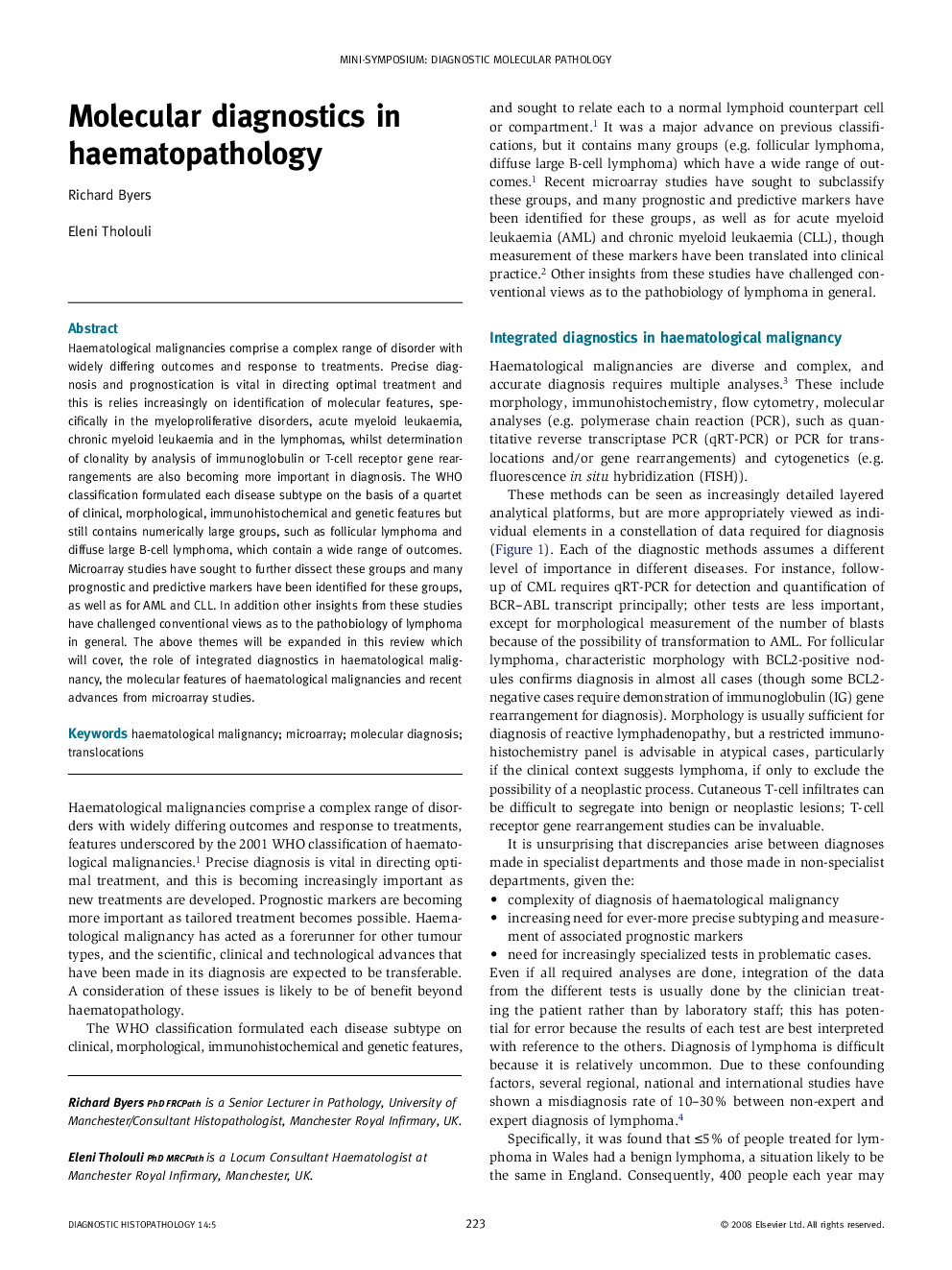| Article ID | Journal | Published Year | Pages | File Type |
|---|---|---|---|---|
| 4131465 | Diagnostic Histopathology | 2008 | 13 Pages |
Haematological malignancies comprise a complex range of disorder with widely differing outcomes and response to treatments. Precise diagnosis and prognostication is vital in directing optimal treatment and this is relies increasingly on identification of molecular features, specifically in the myeloproliferative disorders, acute myeloid leukaemia, chronic myeloid leukaemia and in the lymphomas, whilst determination of clonality by analysis of immunoglobulin or T-cell receptor gene rearrangements are also becoming more important in diagnosis. The WHO classification formulated each disease subtype on the basis of a quartet of clinical, morphological, immunohistochemical and genetic features but still contains numerically large groups, such as follicular lymphoma and diffuse large B-cell lymphoma, which contain a wide range of outcomes. Microarray studies have sought to further dissect these groups and many prognostic and predictive markers have been identified for these groups, as well as for AML and CLL. In addition other insights from these studies have challenged conventional views as to the pathobiology of lymphoma in general. The above themes will be expanded in this review which will cover, the role of integrated diagnostics in haematological malignancy, the molecular features of haematological malignancies and recent advances from microarray studies.
